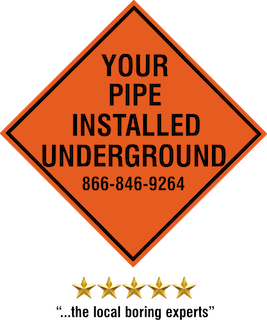Drinkable Water Line Boring
What Is Water Line Directional Boring?
Directional boring is a trenchless method of installing water lines underground along a predetermined bore path. The directional drilling system allows for the placement of water pipe with minimal disturbance or disruption along the ground surface. With water line directional boring, obstacles like sidewalks, driveways, parking lots, roads and landscaping are easily bypassed reducing the direct and indirect costs of trenching water lines.
Georgia Underground Construction Drinking Water | Water Supply Distribution System
Georgia Underground Construction Drinking Water | Water Supply Distribution System
Water supply transmission and distribution systems distribute drinkable water underground as a water utility.
The outlook for our water systems is bleak. Consider these numbers laid out in the recent ASCE Infrastructure Report Card for drinking water and wastewater pipes. They are staggering. There are an estimated 240,000 water main breaks per year in the United States, according to the report.
Assuming every pipe would need to be replaced, the cost over the coming decades could reach more than $1 trillion, according to the American Water Works Association (AWWA).
Our auger and directional boring teams have directional bored thousands of feet of C900 water pipe for both municipal water supply transmission and distribution systems.
Georgia Underground Construction Drinking Water | Commercial Water Services
Georgia Underground Construction Drinking Water | Commercial Water Services
Commercial water services use underground pipe to carry water. Installation of commercial water lines often requires horizontal directional drilling to install new pipe and maintain current lines.
Boring water lines avoids damages to your building, landscaping and hardscaping like parking lots and driveways.
Boring is a trenchless option for establishing a new water lines underground.
Significant cost savings can result when compared to conventional water line open cut installation methods.
Boring often has shorter completion times & is safer for the environment.
Georgia Underground Construction Drinking Water | Residential Water Service
Georgia Underground Construction Drinking Water | Residential Water Service
New residential water service lines use underground pipe to carry water. Residential water lines often require directional boring to install new pipe under both existing hard and soft surfaces
The Benefits of Horizontal Directional Drilling New Residential Water Lines
Ability to drill beneath surface obstructions or ongoing site operations.
Less disruptive to the surface area and environment no open trenches.
Limited traffic and landscape disruption.
Limited weather related delays.
Savings in excavations and surface damage repairs.
Saves on shoring costs and trenching related accidents.


